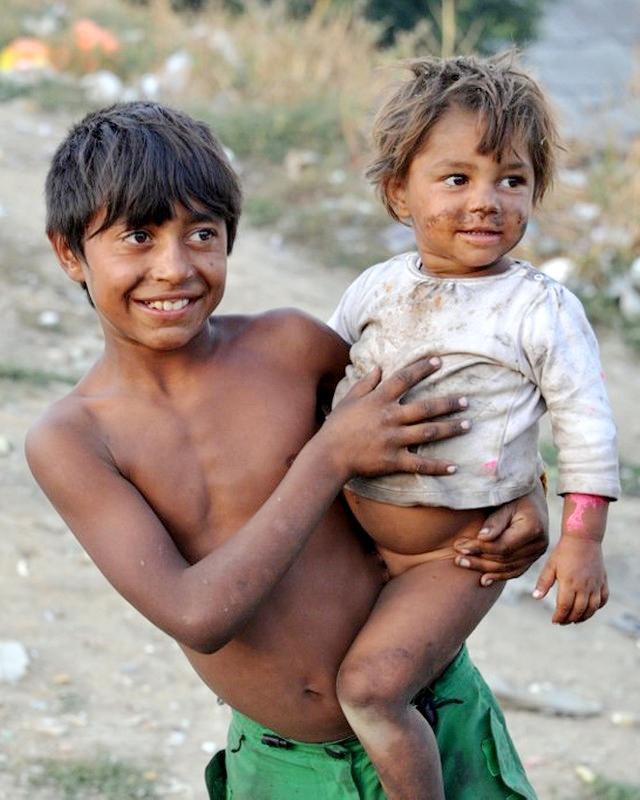
Romanian Gypsies: Historical Background--Post-Communist Era (1989- )

Figure 1.--Here we see two Romanu=ian Gypsy boys in the 2010s. They are earing only a few old garments. That is common everywhere among poor Gypsies. It is not very different from what we see in earlier 20th century photographs abd even earlier drawings. Traditionally many Gypsy parent do not see clothing as very important for their children, even in cold weather. The photogrph lso suggests a close bond between the boys.
|
|
The fall of Communism meant the obligation and work assignments disappeared (1989). The lack of education an rampany bias meant that high unemployment and dependence on welfare became part of Gypsey life. People in Romania and other Eastern European counries had troublke adjusting to the economic changes. Many turned on the Gypsies as scapegoats. It is an old story in human behavior. State-sanctioned persecution continued, perhaps increasing. Many Gypsies resist further assimilation. They often live in segregated neigborhoods, essentially modern ghettos. Others live in small, remote, self-contained villages. Often located a long walk up a dirt road and isolated from the mainstream society. Many if not most live in great poverty. Polygamy can be found in Gypsey communities. Both boys and girls commonly marry earlier and start having children at a very early age. Most Gypsy children enter school along with other children. Tragically a high percentage of Gypsy children leave school early and drop out. Some Gypsys succeeded in making it into mainstream society, but commonly they do so by turning their backs on their own Gypsy heritage. Many Romanians continue to harbor very negative attitudes toward Gypsius. In researching this subject we found that many Romanians not only dislike Gypsies, but do not even like the subjct to come up. They believe that Gypsies are giving their country a bad name. Some Romanians interviewed even insisted that there are very few Gypsies in Romania and they are not a significant minority. A typical response reads, "There are a lot of Roma in Slovakia, Hungary and the Balkans but the Western media never discuss them. Media gives a distorted perception on the number of Romas existing in Romania and the false idea that their number is the largest in Europe. By example Western Media claim that there are 2–3 millions of Gypsies in Romania while two consecutive census gave less than 800 000." [Fillmon]
Sources
Fillmon, L. Personal communications (June 17, 2018).
HBC

Navigate the Boys' Historical Clothing Web Site:
[Return to the Main Romanian historical gypsy page]
[Return to the Main Romanian gypsy page]
[Return to the Main Romanian minority page]
[Return to the Main European gypsy page]
[Return to the Main Gypsy page]
[Introduction]
[Activities]
[Biographies]
[Chronology]
[Clothing styles]
[Countries]
[Bibliographies]
[Contributions]
[FAQs]
[Glossaries]
[Images]
[Links]
[Registration]
[Tools]
[Boys' Clothing Home]
Navigate the Boys' Historical Clothing national pages:
[Return to the Main Romanian page]
[Return to the Main countries page]
[Australia]
[Belgium]
[England]
[France]
[Germany]
[Ireland]
[Italy]
[Japan]
[Korea]
[Mexico]
[New Zealand]
[Scotland]
[United States]
Created: 7:21 AM 6/18/2018
Last updated: 7:21 AM 6/18/2018



